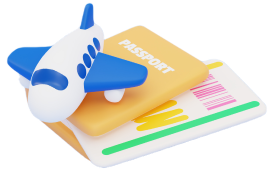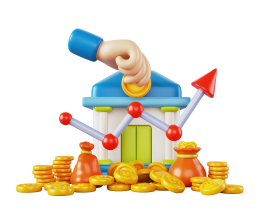-
Visas & Immigration
-
Taxes
-
Cost of Living
-
Companies Hiring
-
Relocation Companies
-
Jobs
-
Salaries
-
Healthcare & Insurance
-
Webinars
Cost of Living in Denmark

Rebeka Meszaros
Rebeka is a professional content writer who specializes in marketing, business, travel, and expat tips. She enjoys sharing practical, down-to-earth advice, whether it's helping businesses better their marketing strategy or providing insights about living overseas. Rebeka adds a personal touch to her writing, ensuring that every piece connects with readers.

Oleksandra Dosii
Oleksandra is a dedicated marketer with a passion for growing HR-tech products. She believes content marketing is about delivering high-quality content that provides value—not just generating leads. Since 2016, Oleksandra has been involved in tech talent relocation.

Start Advertising

In Denmark, a single person's estimated monthly cost is around €2,169. For a family of four, it comes to approximately €5,832 (Source: Numbeo).
In this article, we’ll break down the expected cost of living in Denmark, looking at food, transportation, utilities, leisure, and childcare to help you manage your budget effectively.
How expensive is it to live in Denmark?
Denmark is the 4th most expensive country in Europe. A family of four faces monthly costs of €3,925 plus €1,907 for rent, totaling €5,832. For a single person, it's €1,094 for living expenses and €1,075 for rent, totaling €2,169 monthly.
Compared to Germany, where a family spends €5,048 and a single person €1,880, Denmark is slightly more expensive. The Netherlands is higher, with family costs at €5,589 and €2,352 for singles, mostly due to higher rent. Denmark sits between the two, with housing being the main factor driving costs (Source: Numbeo).
Most expensive city to live in Denmark?
Copenhagen is the most expensive city in Denmark, with a monthly cost of €2,751. Aarhus comes next with €2,285, while Odense is the 3rd most expensive, totaling around €2,110 for living expenses and rent.
Cheapest city in Denmark
Sonderborg in the West is the cheapest city in Denmark, with a monthly cost of about €1,272. Holstebro comes in at €1,295, and Kolding is close behind at €1,297, making these some of the most affordable spots to live in Denmark (Source: Livingcost.org).
Cost of living in Denmark vs the UK
If we compare the Denmark cost of living with the UK cost of living, general living expenses are higher in Denmark. A family of four spends around €5,832 per month in Denmark, compared to €5,338 in the UK. For a single person, the costs are €2,169 in Denmark and €2,210 in the UK.
Rent also differs, with a one-bedroom apartment in Denmark costing around €1,907, compared to €1,249 in the UK. A three-bedroom apartment in the city center is more expensive in Denmark at €2,751, while in the UK, it's €2,084 (Source: Numbeo).
(London is a separate case, with living costs that far exceed the national average and the Denmark average.)
Comparing the cost of some everyday groceries (Source: Numbeo):
| Item | Denmark (€) | UK (€) |
| Cappuccino (regular) | 5.42 | 3.82 |
| Domestic beer (0.5 liter draught) | 6.70 | 5.30 |
| Meal at an Inexpensive Restaurant | 10 | 17.68 |
| Bottle of wine (mid-range) | 8.70 | 9.43 |
| Eggs (regular, 12) | 4.20 | 3.46 |
| Chicken fillets (1kg) | 10 | 7.81 |
Cost of living in Denmark vs the US
The cost of living in Denmark is generally higher than in the US when you exclude rent. A family of four in Denmark spends around €5,832 monthly, compared to €3,754 in the US. For a single person, it's €2,169 in Denmark and €1,055 in the US.
Rent is higher in the US, especially in city centers, where a one-bedroom apartment costs about €1,580, while in Denmark, it's around €1,907. This makes the overall Denmark cost of living higher. Including rent, a family of four in the US would spend about €5,334 compared to €5,832 in Denmark (Source: Numbeo).
Comparison of everyday groceries (Source: Numbeo):
| Item | Denmark (€) | US (€) |
| Cappuccino (regular) | 5.42 | 4.62 |
| Domestic beer (0.5 liter draught) | 6.70 | 5.39 |
| Meal at an inexpensive restaurant | 20 | 17.98 |
| Bottle of wine (mid-range) | 8.70 | 13.49 |
| Eggs (regular, 12) | 4.20 | 3.31 |
| Chicken fillets (1kg) | 10 | 10.84 |
Rent per month
Here’s the average monthly rent in Denmark, which varies depending on the city and size of the apartment: (Source: ):
- Apartment (1 bedroom) in city center: €1,075
- Apartment (1 bedroom) outside of center: €834
- Apartment (3 bedrooms) in city center: €1,907
- Apartment (3 bedrooms) outside of center: €1,443
The Danish rental market is seeing steady growth, especially in Copenhagen, where low vacancy rates and fewer new buildings are pushing rents up. Expats can expect rent to keep rising, particularly in central areas of the city. With construction slowing due to higher costs, demand for existing rentals is increasing. Colliers predicts that rent prices will continue to go up in 2024 and 2025, with rental returns expected to reach 6-8% in 2024 and possibly 10-12% in 2025 as the market stabilizes and interest rates drop.
How to find an apartment in Denmark
Finding a rental in Denmark can be competitive, particularly in cities like Copenhagen and Aarhus. Begin your search on trusted platforms like BoligPortal, Lejebolig, and Akutbolig, which offer a range of listings across Denmark. Be prepared to pay a deposit of up to three months' rent, plus the first month's rent upfront. And, most rentals are unfurnished, so it’s important to budget for furniture too. If you're new to Denmark, services like Bienvenido a Copenhague can help expats in navigating the rental market and avoiding scams.
Make sure to also review your rental contract carefully, especially section 11, which covers maintenance rules. Since contracts are often in Danish, use translation tools or professional services to ensure you understand all terms. Additionally, inspect the apartment within the first 14 days to document any pre-existing damages to avoid future charges. You’ll also need to register your address for a CPR number, which is essential for healthcare and setting up utilities.
If you are searching for housing in Denmark, we’re happy to assist and provide you with a quote or connect you with our trusted providers who have helped many expats secure accommodation. Whether you're in need of short-term rentals or long-term apartments, we have reliable contacts to make your search smoother and stress-free.
Utilities
A big part of your monthly Denmark cost of living is your monthly utilities (Source: Numbeo):
- Basic utilities (electricity, heating, cooling, water, garbage) for an 85m2 apartment: €201
- Mobile phone plan with calls and 10GB+ data: €17
- Internet (60 Mbps or more, unlimited data): €35
To save on utilities in Denmark, use Elpris.dk to compare electricity suppliers and find cheaper rates, especially variable ones that lower costs during off-peak hours. You can also save by bundling services through Telenor or Telia. If your rental allows, choose energy-efficient appliances with A-G ratings, and use tips from Life in Denmark to monitor and reduce water and heating usage to keep your bills down.
Public transport
To get around Denmark, you can use DSB to plan train trips and buy tickets, especially for longer routes like Copenhagen to Aarhus. In cities like Copenhagen, buses, the metro, and harbor buses make it easy to get around. You can buy tickets at stations or use the Copenhagen Card for unlimited travel and entry to attractions. For regional travel, FlixBus and ferries like Scandlines connect cities and islands.
Here’s a snapshot of some of the prices for public transport in Denmark (Source: Numbeo):
- One-way ticket for local transport: €3.20
- Regular monthly pass: €80
- Starting fare for a taxi ride: €6.70
- An hour of waiting time in a taxi: €64
- Gasoline: €1.90 per liter
Food
When grocery shopping in Denmark, you can find discount stores like Rema 1000, Fakta, and Netto that offer low-cost essentials. For fresh produce or specialty items, check out local greengrocers or markets like Bazar Vest near Aarhus. If you prefer shopping online, nemlig.com delivers groceries right to your door. For extra savings, use the TooGoodToGo app to buy discounted surplus food. Most Danes use cards or MobilePay, so cash isn't widely accepted. Keep an eye on special deals with the Minetilbud app to stretch your budget further.
Groceries in Denmark cost around (Source: Reddit):
- For a single person: €260-€390
- For a couple: €520-€650
- For a family of four: €800-€1000
Here are some average prices for eating out (Source: Numbeo):
- Meal at an inexpensive restaurant: €20
- Meal for two people at a mid-range restaurant (three-course): €100
- McMeal at McDonald's (or equivalent combo meal): €12.73
- Domestic beer (0.5 liter draught): €6.70
- Cappuccino (regular): €5.42
- Coke/Pepsi (0.33 liter bottle): €3.60
- Water (0.33 liter bottle): €2.70
Mobile phone plan
In Denmark, setting up a mobile phone plan is simple, and the coverage is great across the country. You can choose between prepaid SIM cards or mobile contracts, with contracts requiring a Danish CPR number, ID, and a bank account.
Main providers:
- Telenor: reliable coverage with plans from €15 to €25 per month, including free calls, SMS, and data.
- Telia: strong coverage, Telia’s plans start at €12 per month, contract or prepaid options.
- Oister: budget-friendly provider with plans from €13 to €24 per month, focusing on affordable data packages.
Budget-friendly options:
- Lebara: Great for international calls, with prepaid plans starting from €2.50 per month.
- Lycamobile: Offers low-cost plans from €9 per month, with unlimited calls and data.
eSIMs:
- Providers like Telenor, Telia, and OiSTER also offer eSIMs for compatible phones, with activation fees of around €4.50.
Childcare
Childcare in Denmark is subsidised, with parents paying up to 30% of the total costs, which really helps with the high Denmark cost of living if you have a family. For more information on childcare options and benefits, you can visit Borger.dk or contact your local municipality. Discounts apply if you have more than one child enrolled in daycare.
Types of childcare and prices (Source: International.kk.dk):
- Public nursery (Vuggestue): Costs around €530 per month (DKK 3,950), including meals. This option is for children under 3, and it’s managed by trained pedagogues.
- Kindergarten (Børnehave): Costs approximately €340 per month (DKK 2,541) for children aged 3-6, including meals. The focus is on social skills, creativity, and physical development rather than early academics.
- Family daycare (Dagpleje): Priced around €450 per month (DKK 3,368), this care is offered in private homes by childminders for small groups of up to five children.
- International preschool: Schools like Copenhagen International School provide English-language environments, ideal for expat families looking for continuity in education.
- Preschool: Free for children aged 3 and up for 15 hours per week.
On average for a year (Source: Numbeo):
- Preschool (or kindergarten), full day, private, monthly for 1 child: €467
- International primary school, yearly for 1 child: €5,659
Gym
Expats in Denmark have plenty of gym options for all budgets, from affordable places like FitX to more premium options like SATS. Many gyms, like Fitness World, offer flexible memberships without long-term contracts and have lots of convenient locations.
Major gym brands and their monthly prices:
- SATS: from €70
- FitX: from €29
- PureGym: from €25
- Nordic Strong: from €20
- Fitness club, monthly fee for 1 adult (average): €36
Explore Cities
Need help finding housing abroad?

Fill out this form

Shoot us an email with your inquiry at [email protected].






















